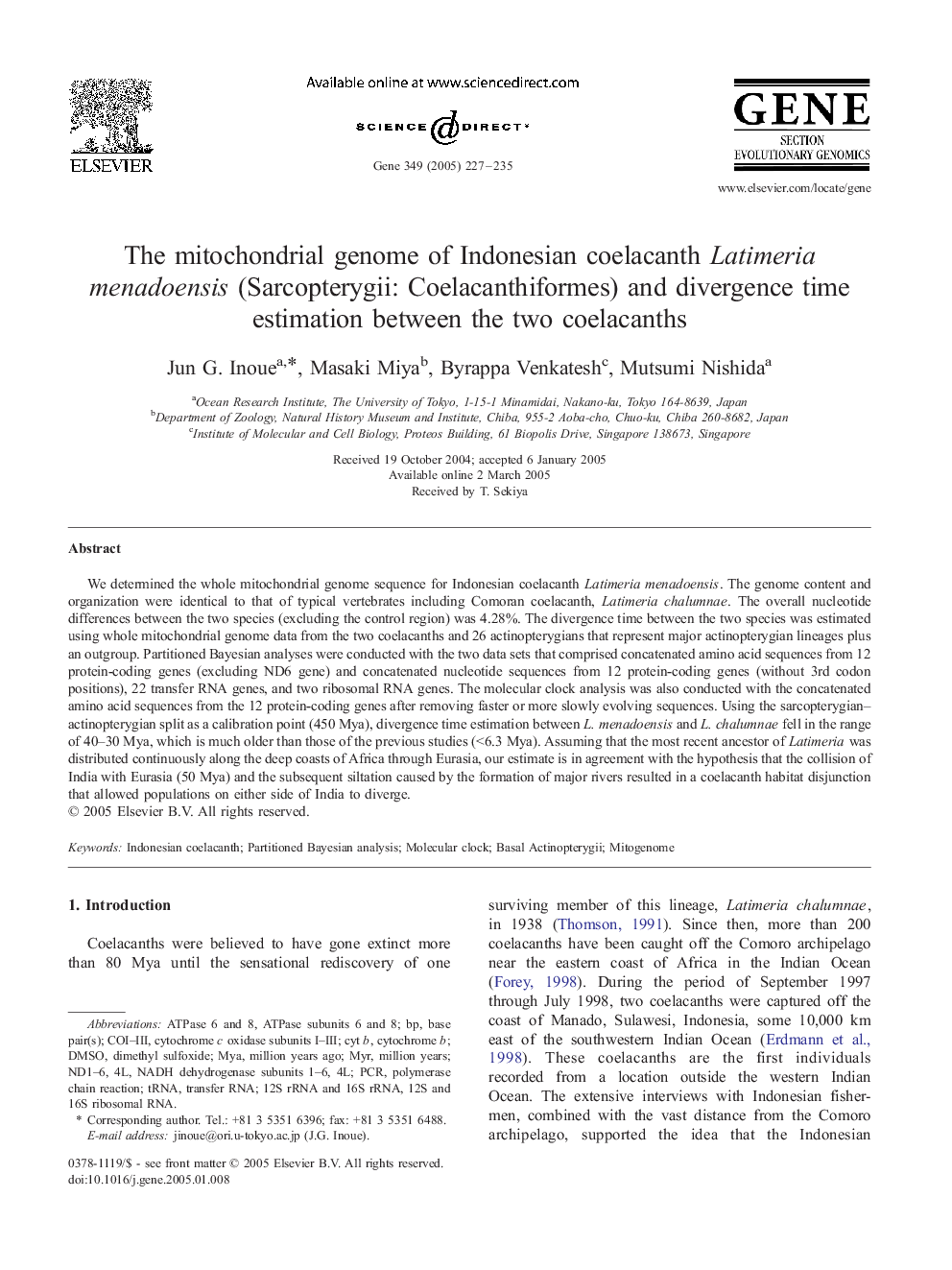| کد مقاله | کد نشریه | سال انتشار | مقاله انگلیسی | نسخه تمام متن |
|---|---|---|---|---|
| 9127277 | 1569973 | 2005 | 9 صفحه PDF | دانلود رایگان |
عنوان انگلیسی مقاله ISI
The mitochondrial genome of Indonesian coelacanth Latimeria menadoensis (Sarcopterygii: Coelacanthiformes) and divergence time estimation between the two coelacanths
دانلود مقاله + سفارش ترجمه
دانلود مقاله ISI انگلیسی
رایگان برای ایرانیان
کلمات کلیدی
COI–IIIATPase subunits 6 and 8Partitioned Bayesian analysistRNAMitogenomeCytochrome c oxidase subunits I–IIIDMSO - DMSOtransfer RNA - انتقال RNABase pair(s) - جفت پایه (ها)Dimethyl sulfoxide - دیمتیل سولفواکسیدMolecular clock - ساعت مولکولیcyt b - سیت بCytochrome b - سیتوکروم بmya - میاMyr - میرmillion years - میلیون سالmillion years ago - میلیون سال پیشpolymerase chain reaction - واکنش زنجیره ای پلیمرازPCR - واکنش زنجیرهٔ پلیمراز
موضوعات مرتبط
علوم زیستی و بیوفناوری
بیوشیمی، ژنتیک و زیست شناسی مولکولی
ژنتیک
پیش نمایش صفحه اول مقاله

چکیده انگلیسی
We determined the whole mitochondrial genome sequence for Indonesian coelacanth Latimeria menadoensis. The genome content and organization were identical to that of typical vertebrates including Comoran coelacanth, Latimeria chalumnae. The overall nucleotide differences between the two species (excluding the control region) was 4.28%. The divergence time between the two species was estimated using whole mitochondrial genome data from the two coelacanths and 26 actinopterygians that represent major actinopterygian lineages plus an outgroup. Partitioned Bayesian analyses were conducted with the two data sets that comprised concatenated amino acid sequences from 12 protein-coding genes (excluding ND6 gene) and concatenated nucleotide sequences from 12 protein-coding genes (without 3rd codon positions), 22 transfer RNA genes, and two ribosomal RNA genes. The molecular clock analysis was also conducted with the concatenated amino acid sequences from the 12 protein-coding genes after removing faster or more slowly evolving sequences. Using the sarcopterygian-actinopterygian split as a calibration point (450 Mya), divergence time estimation between L. menadoensis and L. chalumnae fell in the range of 40-30 Mya, which is much older than those of the previous studies (<6.3 Mya). Assuming that the most recent ancestor of Latimeria was distributed continuously along the deep coasts of Africa through Eurasia, our estimate is in agreement with the hypothesis that the collision of India with Eurasia (50 Mya) and the subsequent siltation caused by the formation of major rivers resulted in a coelacanth habitat disjunction that allowed populations on either side of India to diverge.
ناشر
Database: Elsevier - ScienceDirect (ساینس دایرکت)
Journal: Gene - Volume 349, 11 April 2005, Pages 227-235
Journal: Gene - Volume 349, 11 April 2005, Pages 227-235
نویسندگان
Jun G. Inoue, Masaki Miya, Byrappa Venkatesh, Mutsumi Nishida,